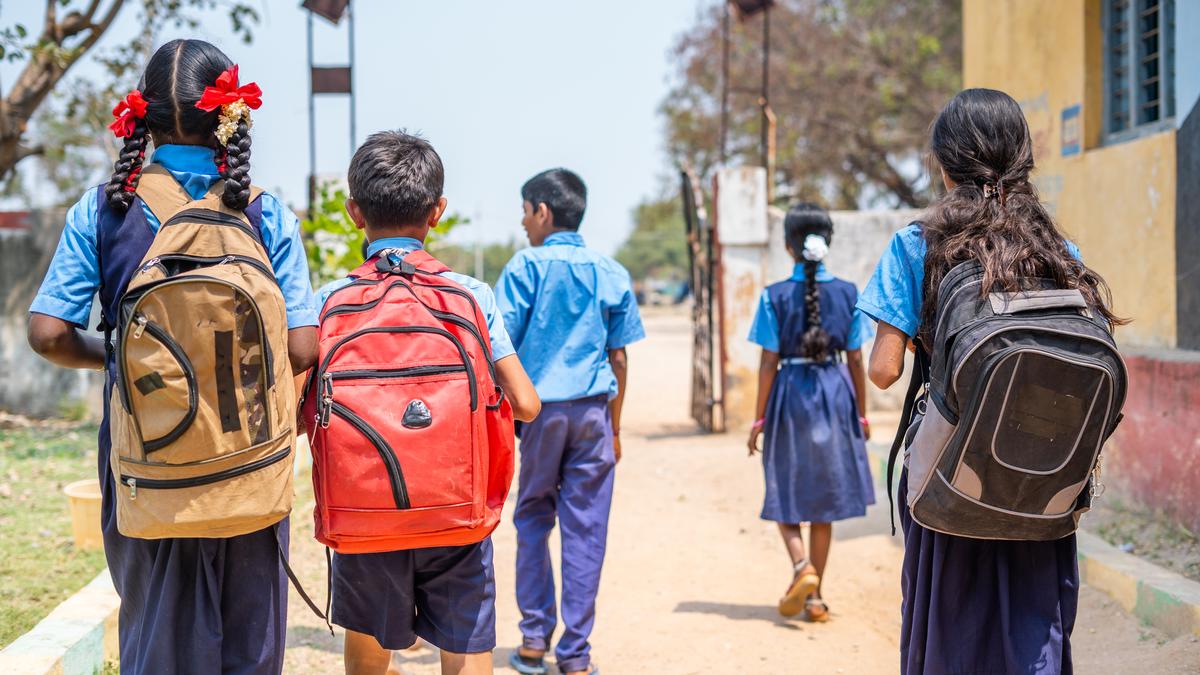ARTICLE AD BOX
Last Updated:July 08, 2025, 17:11 IST
The bench ruled that even without eyewitness testimony, the cumulative effect of the evidence was sufficient for conviction

The bench also noted the double-barrel gun, one live and two spent cartridges, and a handbag were recovered at the instance of the appellant from the house of the grandfather of the appellant where he lived. (PTI File)
The Supreme Court (SC) has upheld conviction of a man for killing his friend in 2006 in a case based on circumstantial evidence, after finding that a clear pattern from the circumstances, proved with inferential and logical links, unmistakably pointed to his guilt.
A bench of Justices Surya Kant and N Kotiswar Singh held that no material illegality has been committed by the Trial Court and the Karnataka High Court in appreciating the evidence against appellant Chetan, nor can it be said that any gross injustice has been caused to him by the impugned judgment by misreading or ignoring any material evidence.
According to the prosecution, the appellant and deceased Vikram Sinde were friends. The deceased borrowed Rs 4,000 from the appellant and refused to return the money. On July 10, 2006, the appellant took the deceased on his bike with double-barrel gun on the pretext of hunting and killed him in the field of the complainant.
Three days later, the body of the deceased was found and the appellant was arrested on July 22, 2006. He also produced the gold chain of the deceased.
The appellant contended before the apex court that he and the deceased being last seen together cannot be said to have been established with cogent evidence and the recovery of the phone belonging to the deceased was also not proved. No one had seen the appellant shooting the deceased as alleged by the prosecution, nor were they seen together in the field where the dead body of the deceased was found. The gun was also not seized from the deceased but produced before the police by the appellant’s grandfather.
His counsel also contended since the motive had not been established, the prosecution’s case based on circumstantial evidence cannot stand.
Analysing the evidence, the court said even though the last seen witness was declared hostile, he reiterated in his cross-examination that he saw the deceased and the appellant together. Thus, his evidence was trustworthy as regards this aspect.
Among other circumstances, the bench said the appellant remained hidden from July 11, 2006 till July 22, 2006. He was arrested on July 22, 2006, after extensive search at numerous locations after the identification of the dead body. He had misled his friends, his family members and that of the deceased. Personal effects of the deceased, like a gold chain, were recovered from the appellant.
The court also pointed out given the subsequent recovery of the gun and spent cartridges and forensic and ballistic evidence of a link between the pellets recovered from the body of the deceased and the gun recovered, the time lapse, which could have thrown doubt on the last-seen theory, pales into insignificance; rather, it is rendered inconsequential.
The bench also noted the double-barrel gun, one live and two spent cartridges, and a handbag were recovered at the instance of the appellant from the house of the grandfather of the appellant where he lived.
The appellant tried to make out a case that nobody had seen the appellant carrying the gun; the bench, however, opined that the said contention was devoid of merit in view of the evidence of the forensic expert who examined the gun and clearly stated that the gun can be dismantled.
“Merely because there is no evidence of any witness seeing the gun being carried by the appellant, it cannot be fatal to the prosecution case," the bench said.
The court pointed out that where the evidence is circumstantial in nature, the circumstances from which the inference of guilt is to be drawn should be fully established. In other words, each of the circumstances from which certain inferences are sought to be drawn is required to be proved in accordance with law, and there cannot be any element of surmise and conjecture; and each of these circumstances so proved must form a complete chain without any break to clearly point to the guilt of the accused person.
The court has to examine the cumulative effect of the existence of these circumstances which would point to the guilt of the accused, though any single circumstance may not in itself be sufficient to prove the offence, the bench said.
Thus, if the combined effect of all these circumstances, each of which has been independently proved, establishes the guilt of the accused, then the conviction based on such circumstances can be sustained. These circumstances so proved must be consistent only with the hypothesis of the guilt of the accused and should exclude every hypothesis except the one sought to be proved.
If upon evaluation of a set of proved circumstances consistent with understandable and socially recognised human behaviour, as a cumulative consequence, a clear and definitive pattern emerges which irresistibly points to the culpability of the accused person, we see no reason why we should not accept such an inferred conclusion to be correct to fasten criminal liability on the accused, the bench said.
On the other hand, if such an inference is sought to be assailed on the ground of any doubt, the doubt must be a reasonable one consistent with human behaviour under the circumstances of the case and not fanciful, abstract speculation or imagination, the bench said.
In case, the court also pointed out there was evidence that the appellant had remained in abscondence.
It, however, said mere absconding by itself does not constitute a guilty mind as even an innocent man may feel panicky and may seek to evade the police when wrongly suspected of being involvement as an instinct of self-preservation.
“But the act of abscondence is certainly a relevant piece of evidence to be considered along with other evidence and is a conduct under Section 8 of the Evidence Act, 1872, which points to his guilty mind. The needle of suspicion gets strengthened by the act," the bench said.
Coming to the motive, the court said, it is something that is very difficult to prove as it remains hidden in the deep recess of the mind of the person concerned and in the absence of any open declaration by the person concerned himself, the motive has to be inferred from the activities and conduct of the person.
“While proof of motive certainly strengthens the prosecution case based on circumstantial evidence, failure to prove the same cannot be fatal," the bench said.
Even if it is held that there was no such monetary transaction between the appellant and the deceased, the same may not materially affect the Prosecution case, the court held.
With regard to the law of evidence, the bench said, that law does not require that a fact requires to be proved on absolute terms bereft of all doubts.
“What law contemplates is that for a fact to be considered proven, it must eliminate any reasonable doubt. Reasonable doubt does not mean any trivial, fanciful or imaginary doubt, but doubt based on reason and common sense growing out of the evidence in the case. A fact is considered proved if the court, after reviewing the evidence, either believes it exists or deems its existence probable enough that a prudent person would act on the assumption that it exists, the bench said.
The court also said it should not also lose sight of the significance of the provision of Section 313 of the CrPC in the case.
“Examination of an accused under Section 313 CrPC is an important component of the process of judicial scrutiny of the evidence sought to be relied upon by the prosecution against an accused," the bench said.
The court pointed out, this is to enable the accused to prepare and strategize his defence. He will have all the opportunities to discredit any prosecution witness or question any evidence through the tool of cross examination. He will thereafter have the opportunity to lead his defence evidence if any. It is in this context that the answers given by an accused assume great significance in assessing the evidence by the court.
“While the accused is not obligated to answer the questions put to him and still can maintain his silence or deny the evidence, yet silence or evasive or wrong answers to the questions put by the court provides a perspective to the court in properly evaluating the incriminating materials which have been brought forth by the prosecution by drawing necessary inference including an adverse one," the bench said.
Dismissing the appeal, the bench said, in the present case, despite the incriminating evidence which has come up against the appellant and has been pointed out to him by the court, he has not explained any of these but merely denied or feigned ignorance to which necessary inference can be drawn against him.
“We are, therefore, satisfied that the conviction of the appellant by the Trial Court which the High Court upheld does not warrant any interference from this court," the bench said.

Sanya Talwar, Editor at Lawbeat, has been heading the organisation since its inception. After practising in courts for over four years, she discovered her affinity for legal journalism. She has worked previousl...Read More
Sanya Talwar, Editor at Lawbeat, has been heading the organisation since its inception. After practising in courts for over four years, she discovered her affinity for legal journalism. She has worked previousl...
Read More
- Location :
- First Published:
News india ‘Clear Pattern of Guilt’: Supreme Court Confirms Conviction In 2006 Murder
Disclaimer: Comments reflect users’ views, not News18’s. Please keep discussions respectful and constructive. Abusive, defamatory, or illegal comments will be removed. News18 may disable any comment at its discretion. By posting, you agree to our Terms of Use and Privacy Policy.



.png)
.png)
.png)
















 9 hours ago
5
9 hours ago
5









 English (US) ·
English (US) ·